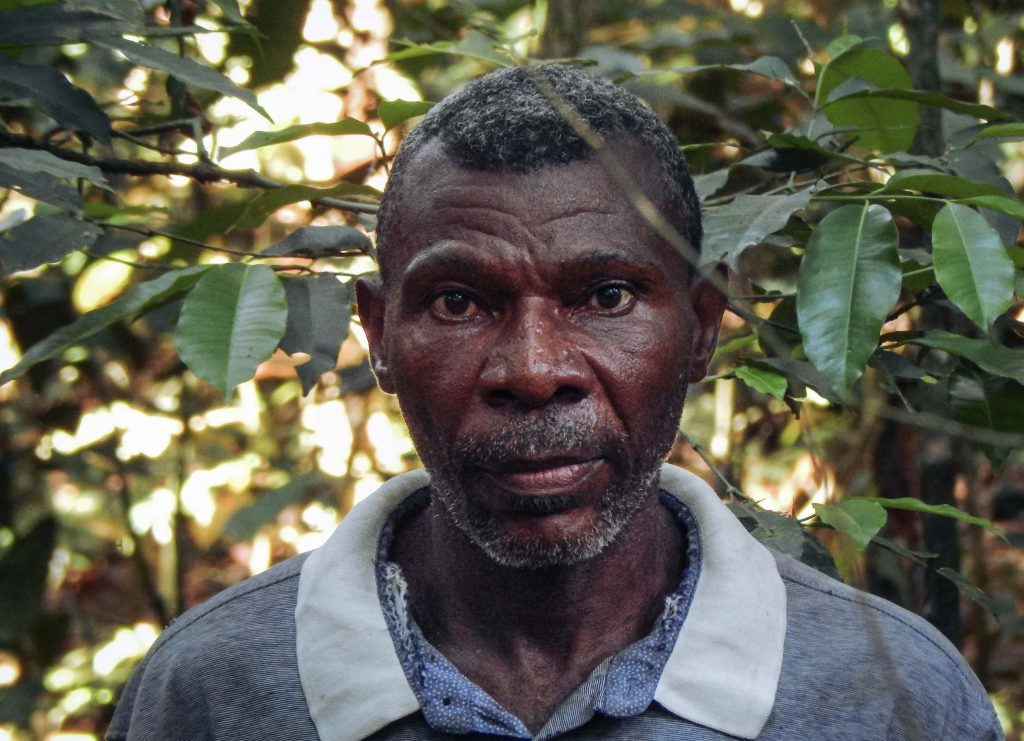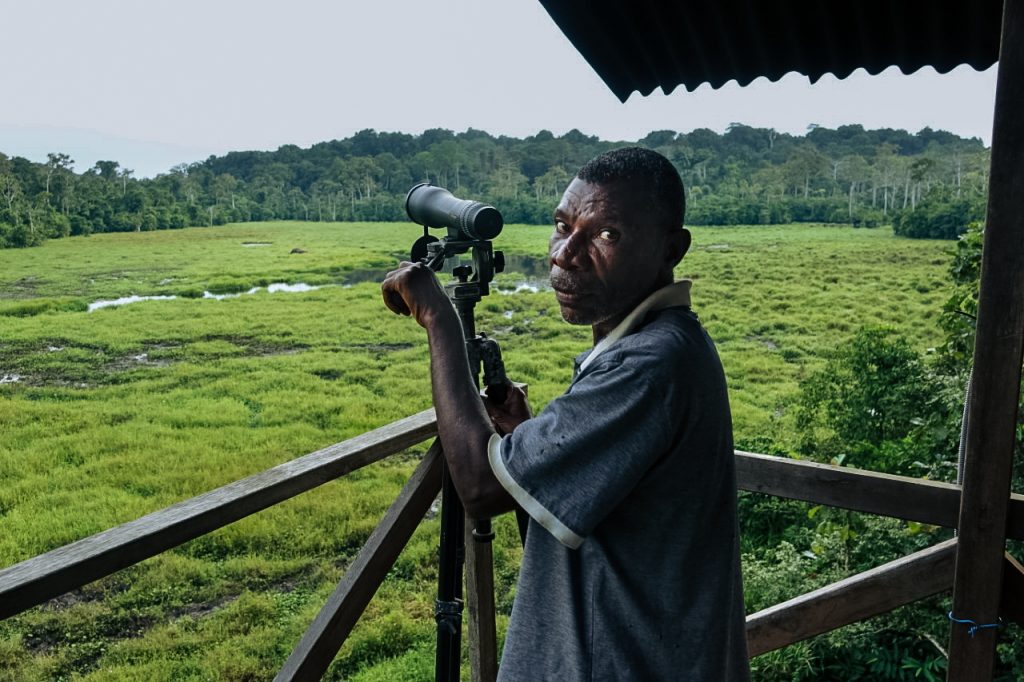Nestor Massembo, 20 years after the Megatransect
Twenty years ago, the legendary expedition across Central Africa known as the “Megatransect” was coming to an end. This large-scale study of the Congo Basin’s forest brought unprecedented international attention to this biodiverse and endangered ecosystem. Among those who took part in this unique adventure, Nestor Massembo, a Ba’Aka tracker, has since then dedicated his life to wildlife conservation.
“Don’t worry about my grey hair” says Nestor Massembo “I would do it again. Even at my age, I could do it again. Undertaking the Megatransect was nevertheless a pretty serious adventure: the team, led by ecologist Michael Fay, crossed 13 forests in Central Africa, walking from northern Congo to the coast of Gabon. Over the course of 460 days, they covered 2,000 kilometers on foot, walking through some of the most challenging conditions on the planet. Throughout the expedition, they continuously collected ecological data about this little-known ecosystem, that harbors incredible biodiversity, attracting unprecedented attention from media and politics.
For Nestor, the adventure started in Makao, a village to the east of Nouabalé-Ndoki National Park. After the Park was created in 1993, a secondary base was created in Nestor’s village. He immediately started to work with WCS. “They were the first real jobs we were offered, and we wanted to know the animals better, we were curious,” he says. He then became a tracker, helping biologist Stephen Blake in his study on forest elephants’ eating behavior. The opportunity quickly became a vocation, and to this day, Nestor still works as a tracker in Mbeli Baï, a forest clearance in the Park, where many species come to drink and rest. “it’s the only job I ever had, with the same daily joy” he says. Nestor and his peers play a crucial role. “We were born here, we grew up here, it’s our world” he explains with pride, “If there was an interest for us, it’s because we know the forest”. Without him, and around ten other Ba’Aka who became his colleagues and friends, nothing would have been possible, as this thick primary tropical rainforest requires sharp, trained eyes to be able to spot the tracks of an animal or to find its feces.
As much as he enjoys his current work, the pivotal moment for his career was being part of the Megatransect; a unique adventure, that he’s proud of, despite the hardships. “We had never walked such a big distance, it was hard, we had never spent that much time in the forest, carrying heavy bags,” he says. Nestor, just like all the trackers, was carrying more than 30kg of equipment on his shoulder, on top of helping the team identifying the plants that great apes and elephants eat, and tracking potential signs of human presence.
It was an incredible physical effort. Nestor accompanied Michael Fay to the border of Gabon, walking in the jungle for months on end. “It allowed me to discover the forest and to learn a lot”, he remembers. He went further than ever before, walked unknown lands. “We all were happy to discover the world of others”.
During the Megatransect, Nestor felt a growing commitment to wildlife conservation, based on a pragmatic and irreversible fact: “We had seen so much, we couldn’t just go and buy a rifle with what we had earned. We were paid by conservation, we became conservationists”.
Around Nestor, four of his closest friends still are trackers. One of them works at the Goualougo Triangle Ape Project, a great ape study in the south of Nouabalé-Ndoki National Park. And his two sons also work there, after learning a lot from their father, and making him proud. “Without us, nothing would have happened the way it did. It’s thanks to our ancestral knowledge. What we did, made all of that possible” he concludes, showing with his arm the Makao base, from where the WCS keeps on studying and protecting the wildlife that lives in, what is still, one of the last remaining patches of pristine forest in the Congo Basin.  Nestor Massembo, in Mbeli Baï, December 2020 ©F.Mehon/WCS
Nestor Massembo, in Mbeli Baï, December 2020 ©F.Mehon/WCS Now assigned in Mbeli Bai, Nestor works mainly at monitoring wildlife ©D.NZoulou/WCS
Now assigned in Mbeli Bai, Nestor works mainly at monitoring wildlife ©D.NZoulou/WCS Makao, September 1999, Michael Fay is recruiting the trackers that will help him during the Megatransect. Nestor is among them, the second from the right. ©National Geographic
Makao, September 1999, Michael Fay is recruiting the trackers that will help him during the Megatransect. Nestor is among them, the second from the right. ©National Geographic
 The route that Michael J. Fay followed, starting from Bomassa, Nouabalé-Ndoki National Park’s main base, in Congo. ©National Geographic
The route that Michael J. Fay followed, starting from Bomassa, Nouabalé-Ndoki National Park’s main base, in Congo. ©National Geographic

